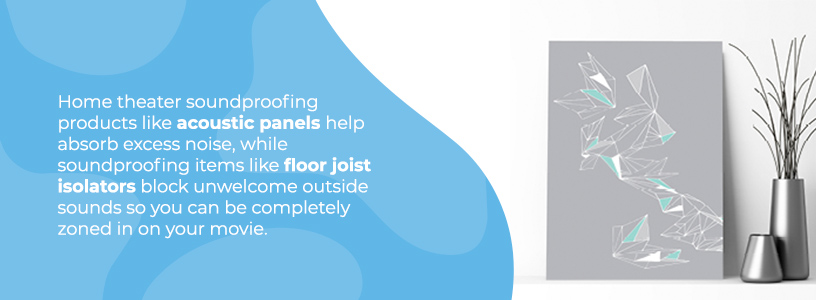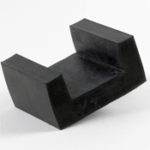
You may have heard about 3D art, but what about 3D audio? In a continually advancing technological age, it makes sense that tried and true electronics are now a thing of the past. Engineers strive to make technology increasingly more realistic and alluring to give consumers a deeply engaging experience. That’s where 3D audio comes into play.
3D sound provides an innovative experience for listeners, causing them to feel like they’re actually immersed in the audio “environment.” Who doesn’t want to feel like they’re a part of their favorite television series or video games? Rather than listening to an unrealistic or “flattened” sound, 3D audio offers an audible reality that your ears can indulge in with satisfaction.
What Is 3D Audio?
Three-dimensional audio provides an exciting sound experience that projects noise from all directions as opposed to just one focal point. You can hear sound effects from the left, right, above you and underneath you. Your surroundings radically transform into a more immersive experience.
Take video games, for instance. Imagine you’re navigating a first-person point-of-view mission as your character ventures throughout mountainous terrains to reach the next destination. However, it’s nighttime and you must rely on sounds to get to your next checkpoint. You hear a footstep and know your quarry is approaching. Rather than blindly running in the dark, 3D audio allows you to hear the direction the sound is coming from as if you are the character in the game.
A Brief History of 3D Audio Sound
Now that you have a foundational understanding of 3D audio, let’s take a look at how it all began. The history of 3D audio is really a history of binaural recording, which is the method of using two microphones to record sound in an attempt to create a 3D stereo sound sensation for the listener.
Here are key dates throughout the history of binaural recording and 3D audio:
- 1881: At the World Expo in Paris, Clement Ader unveiled the theatrophone, which could deliver audio over two phone lines so that musical performances could be listened to from miles away.
- 1933: America made its binaural debut at the Chicago World’s Fair with a dummy named Oscar that had microphones on each side of its head so passersby could put on the headphones and hear everything Oscar did. To this day, the Oscar design is still used.
- 1940: Disney’s “Fantasia” was played in theaters using six audio tracks on several speakers spread throughout the room, as opposed to the traditional single track played from behind the screen.
- 1978: The BBC released the first story recorded in binaural format, “The Revenge.” The story featured no dialogue, just sound effects.
- 1995: Disney World opened their ExtraTERRORestrial Alien Encounter attraction, which used binaural recording to make riders feel like they were truly in outer space.
- 2000: The band Pearl Jam released their album “Binaural,” which was full of tracks in 3D sound. This album made binaural a more mainstream term and sparked a surge of average people purchasing binaural microphones to experiment with sound at home.
- 2013: Some binaural smartphone apps were released, making binaural recording more accessible than ever. Binaural apps indicate that the future of 3D audio technology is interactive and immersive.
How Does 3D Audio Work?
It’s amazing how 3D audio allows us to step into the line of action of a video game, television series or film with ease. But how exactly does it accomplish this seemingly impossible task?
Technicians and engineers utilize a plethora of technological appliances to create a more immersive experience through sound. Often, creators use multiple microphones during the recording process to simulate reality. Various audio devices emit sounds in a sequential rhythm that makes use of how your brain processes noise to make sounds appear more realistic.
For instance, noises that come from the right of you will project louder into your right ear. Then, the sound will reach your left ear in a slightly delayed sequence. This produces the experience of a 3D reality.
Why is 3D Audio Popular?
3D audio has recently grown in popularity — mainly due to the rise of virtual reality. Thanks to modern technology, people can be visually transported to a different world inside a virtual reality headset. To make the immersive experience complete, developers use the power of 3D audio.
With nearly any smartphone capable of being turned into a virtual reality headset, companies are looking to make virtual reality as mainstream, accessible and realistic as possible. Incorporating 3D audio is a big part of making virtual reality users feel as if they’ve entered another universe. For this reason, 3D audio is more popular than ever.
3D Audio Compared to Surround Sound
Though the concepts are similar, 3D audio and surround sound are not quite the same. When you venture to a movie theater to enjoy your favorite film on the big screen, you typically experience the immersion of surround sound systems. Rather than projecting noise from one given direction, the sound reaches you from various projection points.
3D sound focuses more on producing a natural “rhythm” to the sounds our ears process. While surround sound would play the noise of a child laughing that reaches your ears from various directions, 3D sound allows you to hear this sound in a way that makes your brain believe the child is giggling next to you.
How to Give Your Home Theater 3D Audio
To outfit your home theater with 3D audio, the most important item you need is a receiver. Getting a receiver that seamlessly lines up with the action on screen is crucial to completing the 3D-feel of your movie-watching experience. Luckily, most Blu-ray players are compatible with surround sound devices like DTS-HD Master Audio.
In addition to the receiver, you’ll need some speakers to help amplify your sound. Whether you choose regular in-ceiling speakers or standing speakers is a matter of personal preference. Finally, you’ll want to complete your home theater with some soundproofing products to contain the loud 3D audio within the room and keep distracting noises out.
Home theater soundproofing products like acoustic panels help absorb excess noise, while soundproofing items like floor joist isolators block unwelcome outside sounds so you can be completely zoned in on your movie.
Get the Most Out of Your Listening Experience at Soundproof Cow
While you may enjoy the multitude of noises that accompany 3D sounds, sometimes you want to lessen the frequency of the noises which surround you. When you need a supply of soundproofing materials that allow you to control the acoustical properties of your room, Soundproof Cow has you covered.
At Soundproof Cow, we offer a variety of materials crafted to suit our customers’ needs. Contact us for more information today!










